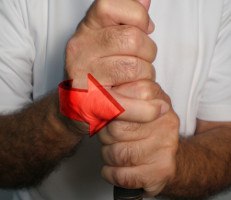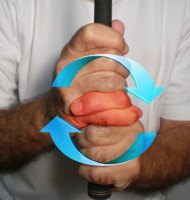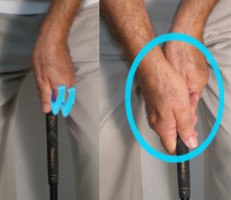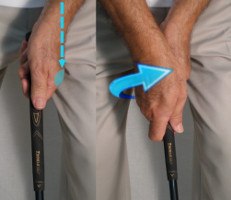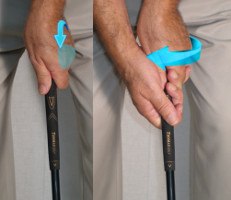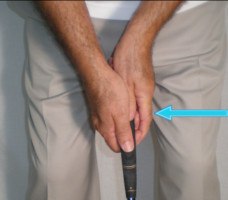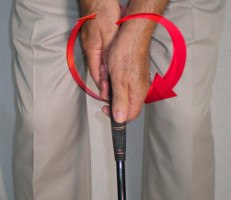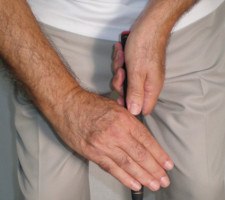Pros and Cons of Every Golf Grip Style |
Best Grip? Overlapping vs Interlocking |
Grip style: Vardon (overlapping)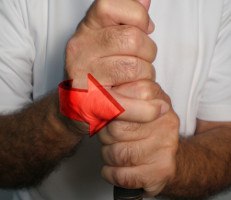 |
Hand position: Neutral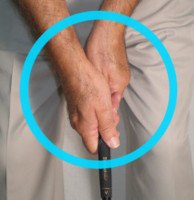 |
Putting grip style / hand position: Reverse overlap / neutral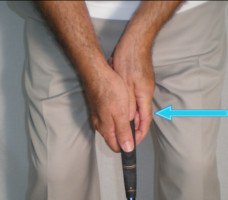
|
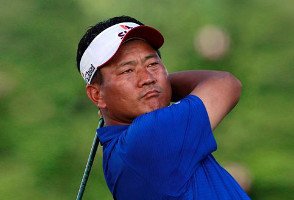
To be precise, K.J. Choi’s grip might be best described as having a neutral left hand and a strong right hand.
Just before he takes the club back, Choi’s left hand is in textbook position: thumb extended down the right center of the handle, back of the hand almost square to the target line, two knuckles visible from a face-on view.
The Korean pro’s right hand is in a slightly strong position: back of the hand nearly flush with the wrist, “V” between thumb and forefinger aimed just inside the right arm and through the shoulder.
When the golfer’s hands are in opposing positions – for example, one strong and the other neutral or weak – it’s called a “mixed” grip. Other pros who exhibit this style include Angel Cabrera and Jamie Donaldson, and it’s not recommended for amateur golfers.
Obviously, Choi gets by with his mixed grip. But for most players, combining a neutral left hand with a strong right could cause a “flipping” release where the right hand rolls too forcefully over the left at impact. Result: a nasty hook.
On the greens, K.J. Choi’s grip with the putter has garnered plenty of attention. Not so much his hand placement, but the grip itself – a super-sized, square-shaped model. Increasingly popular among pros and everyday golfers, oversized grips ease tension in the arms and inhibit wrist movement, two big benefits for players who struggle with standard grips.
Choi surely got some odd looks when he began using the big-handled putter, but not as many as he did when trying the side-saddle style earlier on.
